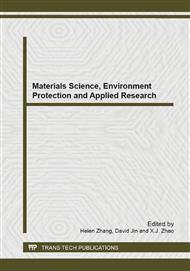[1]
Boteler D H. Geomagnetic hazards to conducting networks [J]. Natural Hazards, 2003, 28: 537-561.
Google Scholar
[2]
Kappenman, J.G., An introduction to power grid impacts and vulnerabilities from space weather [J]. Space Storms and Space Weather Hazards, 2001, 38 (13), 351–361.
DOI: 10.1007/978-94-010-0983-6_13
Google Scholar
[3]
NERC Disturbance Analysis Working Group Report. 1989 March 13 Geomagnetic Disturbance[R]. NERC, 1989, 36-60.
Google Scholar
[4]
Liu Lianguang,Liu Chunming,Zhang Bing,et al.Strong magnetic storm's influence on China's Guangdong power grid[J].Chinese Journal Geophysics,2008,51(4):976-981(in Chinese).
Google Scholar
[5]
Ngwira C M, Pulkkinen A, Wilder F D, et al. Extended study of extreme geoelectric field event scenarios for geomagnetically induced current applications [J]. Space Weather, 2013, 11(3): 121-131.
DOI: 10.1002/swe.20021
Google Scholar
[6]
Trichtchenko L, Boteler D H. Modeling geomagnetically induced currents using geomagnetic indices and data[J]. Plasma Science, IEEE Transactions on, 2004, 32(4): 1459-1467.
DOI: 10.1109/tps.2004.830993
Google Scholar
[7]
Wik M, Viljanen A, Pirjola R, et al. Calculation of geomagnetically induced currents in the 400 kV power grid in southern Sweden [J]. Space Weather, 2008, 6(7):1-12.
DOI: 10.1029/2007sw000343
Google Scholar
[8]
Pirjola R, Viljanen A. Complex image method for calculating electric and magnetic fields produced by an auroral electrojet of finite length[C]. Annales Geophysicae. Springer Berlin/Heidelberg, 1998, 16(11): 1434-1444.
DOI: 10.1007/s00585-998-1434-6
Google Scholar
[9]
D. H Boteler,R. Pirjola,L. Trichtchenko. On calculating the electric and magnetic fields produced in technological systems at the Earth's surface by a wide electrojet[J]. Journal of Atmoshpere and Solar-Terrestrial Physics. 2000(6): 1311-1315.
DOI: 10.1016/s1364-6826(00)00071-7
Google Scholar
[10]
AMM O. Ionospheric elementary current systems in spherical coordinates and their application[J]. Journal of geomagnetism and geoelectricity, 1997, 49(7): 947-955.
DOI: 10.5636/jgg.49.947
Google Scholar
[11]
Pulkkinen A, Amm O, Viljanen A. Ionospheric equivalent current distributions determined with the method of spherical elementary current systems [J]. Journal of Geophysical Research, 2003, 108(A2): 1053-1062.
DOI: 10.1029/2001ja005085
Google Scholar
[12]
Xu Wei Yao. Physics of Electromagnetic Phenomena of the Earth, Chinese Science and Technology University Publishing House, (2009).
Google Scholar


